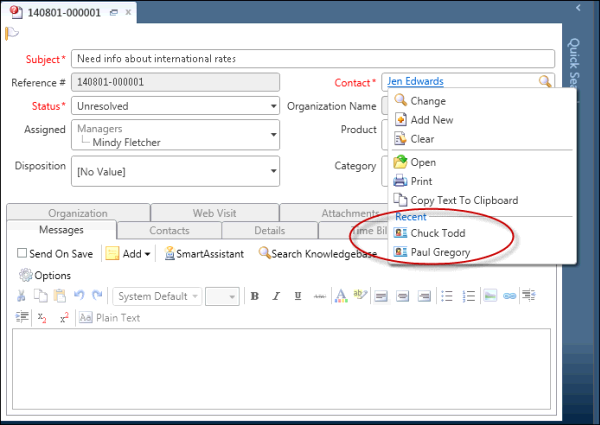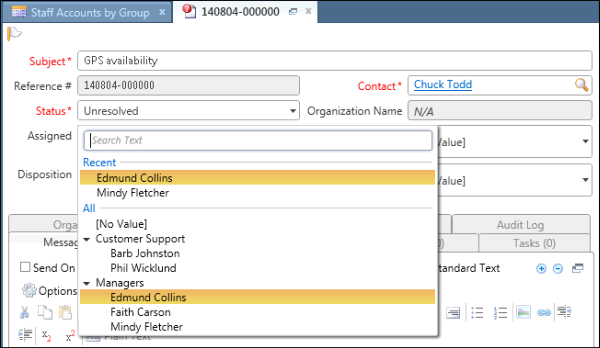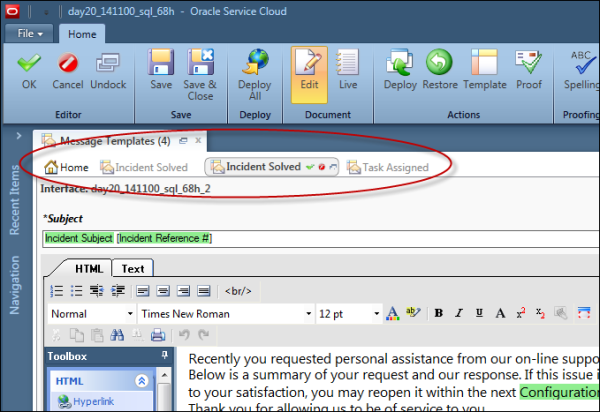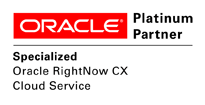Resource
Reshaping Service Experience in 2025 [eBook]
1 min read
Oracle have announced that the November 2014 version of Oracle Service Cloud is now available as part of the quarterly release programme. As usual, there are a broad range of improvements across Web Customer Service, Cross-Channel Contact Centre and the Service Cloud Platform.
In this post, we are going to briefly outline what we feel are the key developments in the November 2014 release that will help your organisation enhance its Customer Experience through
We have been excited about this major product development for some time now, as the November 2014 release provides a first glimpse of the new browser UI! The solution draws parallels to Oracle Sales Cloud, in particular the drive towards a simplified UI- this is something we will be blogging about in the near future.
In this release, the browser UI is designed for the infrequent user, giving the user access to common tasks, such as creating and editing records, and running reports across both standard and custom objects. Oracle are planning to expand the functionality of the browser UI in future releases, but have confirmed that the Agent Browser UI will be provided in addition to the existing smart client and mobile agent desktop.
Oracle have announced that, when a site is upgraded to the November 2014 release or later, the re-branded Service Console will be the default and the legacy Agent Desktop console will not be available.
Much effort has gone in to developing the Service Console to make the UI more user-friendly for agents. The November 2014 release includes features such as:
 Fig 2. Recent items in search fields
Fig 2. Recent items in search fields
 Fig 3. Drop down fields recent selections
Fig 3. Drop down fields recent selections
Oracle have further enhanced the Experience Routing functionality released in May 2014 with the addition of skill-based assignment. Organisations now have the ability to specify the agent skill requirements for each queue, allowing for finer-grained control of agent assignment based on their specific skills. This will enable end-users to be paired up with agents that are better placed to resolve their issue.
Oracle Service Cloud has expanded integration with the ATG Engagement Engine to provide visitor browser history to better understand the customer's transition from self-service to assisted-service. Using this new feature, agents can effortlessly access the historical URLs and gain immediate visual insight into the actions that led to the customer's need for agent assistance. Agents will be empowered to bypass unnecessary exchanges with the customer, thereby reducing average chat handle time and increasing customer satisfaction.
The following enhancements have been made to Co-browse in the November 2014 release:
Several features have been added that make it easier and faster for you to customise and personalise the content of your administrator notifications, administrator emails, contact emails, and print templates.
 Fig 4. Sub-tabs in the Message Template Editor
Fig 4. Sub-tabs in the Message Template Editor
Fig. 5 Creating a Conditional subject line
November 2014 marks another successful quarterly release for Oracle Service Cloud, with the features described above, alongside smaller developments, combining to give a more complete customer service solution.
If enhancing your customers experience is a priority for your organisation, why not contact us, or call us now on +44 203 2834315, to discuss how your organisation can benefit from using a customer experience focused application such as Oracle Service Cloud.
Boxfusion Consulting are a Specialised Oracle Service Cloud Implementation partner.
1 min read
Explore how Network Rail provides high-quality information to its customers and users...
3 min read
Learn how Smeg delivers excellent customer service by leveraging Oracle's Generative AI...
3 min read